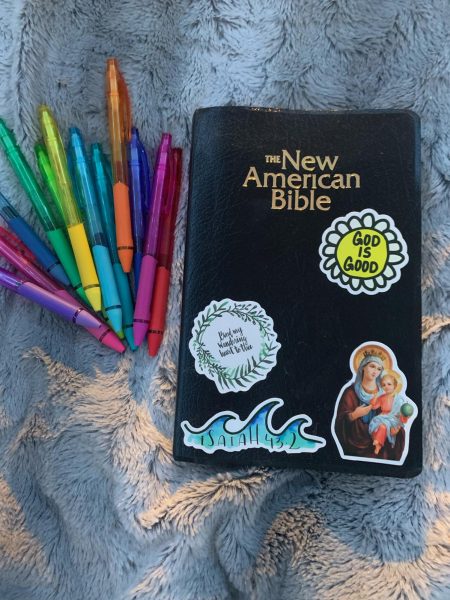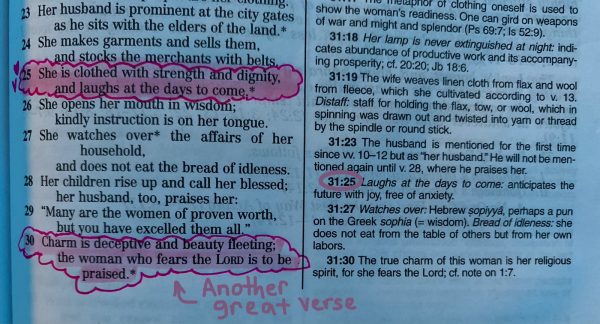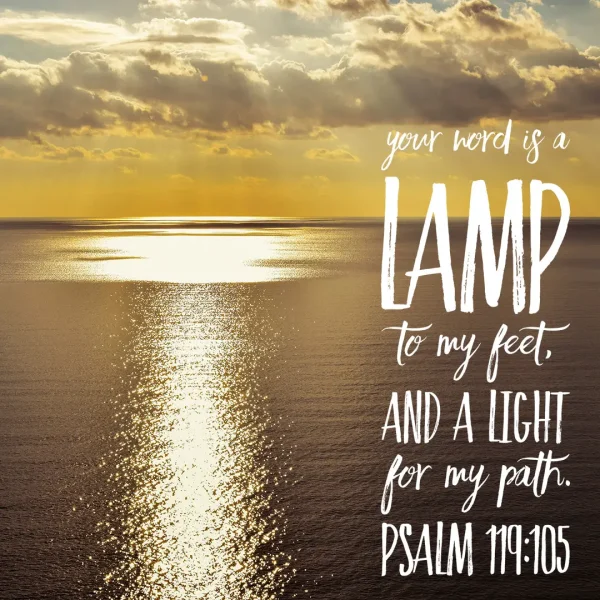My Way to Ponder the Words of YHWH

Reading a classic novel or admirable story can whisk someone away into the world-building, character development, and brilliant teachings a novel or story has to offer.
When it comes to ancient works of literature, specifically the Bible, interpreting such can seem strenuous or daunting, as though one needs an exceptionally intuitive mindset for interpretation.
However, there is no need to fear! Anyone is capable of reading the Bible, acquiring its many messages and by doing so, growing a deeper bond with the Father!
So the real question is, where does one begin?
Well, without further ado, I would love to detail how I annotate and absorb the word of God!

Before we jump into how I take on reading specific texts, knowing the genres presented in the Bible helps establish an understanding of how each book presents a distinct aspect of God’s message.
In total, there are 73 books in the Catholic Bible (46 from the Old Testament and 27 from the New Testament). Each book can be arranged into eight categories: law (the Pentateuch), history, biblical novellas, wisdom, prophecy, gospels, the New Testament letters and the Catholic letters.
As an example, if I were to read a chapter from Exodus, I know that that book is under the Pentateuch, so it is bound to discuss the early rules, laws, and life of God’s people post-creation.

Given that the books of the Bible are identifiable by certain categories, the next step is to pick out certain aspects talked about throughout the Bible, regardless of what book they are in.

When I say “aspects,” I am referring to specific things mentioned throughout each book’s chapter(s). These “aspects” help to elaborate on themes and messages of certain chapter(s) discussed.
I take note of these “aspects” by creating a key in the very front of my Bible that I can flip back and forth to as I read. To create this key, I picked out at least ten colored pens (as of right now, I am using fourteen) and a highlighter. Adjacent to writing each color’s name in that specific color, I write down certain aspects I feel correspond with that color. For example, for the color red, I have aspects such as Jesus, sacrifice, wine, etc. For my highlighter, I save its use for verses that stand out as noteworthy to me, along with making note of distinct people, locations, and teachings mentioned.

Now it is time to test out this method!
As an example, let’s use my favorite Bible verse Proverbs 31:25:
“She is clothed with strength and dignity, and she laughs without fear of the future.”
Given that this verse is from Proverbs, it can be located under the genre “wisdom,” which tells us that it will be insightful, uplifting and a source of inspiration.
Additionally, this verse utilizes keywords including “she,” “strength,” “dignity,” “laughs,” and “without fear.”
Let’s reflect back to the color-coded aspects on slide three. You can see that “femininity” is under pink (correlating with “she”). “Strength” is under green while “dignity” is under purple. “Happiness” is under yellow (correlating to “laughs”). Additionally, both “fear” for navy and “victory over evil” for magenta can correlate to “without fear.”
The following images will show a progression of dissecting this verse to acquire its message:
Annotating the Bible in Action!
Additionally, Bibles usually include a summed-up portion of some verses. For example, my Bible states the following:

However, not every verse has one; this is why this method excels in breaking down God’s Word when we do not have a blurb of the verse adjacent to the text.

That concludes an overview of how I annotate the Bible!
Here are the most important takeaways:

- Not every Bible will have the same word-for-word writing. However, the message remains the same.
- It does not matter what color you choose to make a certain aspect mentioned within the Bible! As long as you specify it using a particular color, it will be easier to grasp the context of Bible verses.
- Don’t feel afraid to write within your Bible! I implore you to! Annotations build a greater understanding of the context of God’s Word; as a plus, if you were to flip back to a verse and see your annotations present, you would remember the premise of that verse without having to dissect what it means again.
- Remember: this is just one of many ways people choose to read the Bible. What matters most is that methods like color-coding your Bible build habit! Building a faith-centered habit allows for the continuation of digesting the Bible, benefiting one’s spiritual life day by day.
For more insight on reading/annotating/studying the Bible, check out the following:
Ten Ways to Read the Bible – Warren Church
Ways to Read the Bible – Father Mike Schmitz



